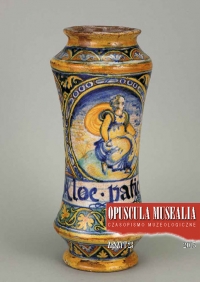The application of modern analytical techniques to the examination of the Henryk Siemiradzki’s large-size painting „Nero’s Torches”
The application of modern analytical techniques to the examination of the Henryk Siemiradzki’s large-size painting „Nero’s Torches”
Author(s): Dominika Sarkowicz, Marzena Sieklucka, Anna Klisińska-Kopacz, Paweł Frączek, Michał ObarzanowskiSubject(s): Museology & Heritage Studies, Photography, Visual Arts, 19th Century
Published by: Wydawnictwo Uniwersytetu Jagiellońskiego
Keywords: Siemiradzki; technology and painting technique; XRF spectroscopy; analytical radiation photography; IR; UV; X-ray;
Summary/Abstract: Nero’s Torches by Henryk Siemiradzki is one of the most important and the largest in size paintings in the collection of the National Museum in Kraków. In 1879, the painter donated his famous work to the nation. It was assigned to the Cloth Hall. By this act the artist initiated the start of the fi rst national museum in Poland. The painting was thoroughly examined in order to identify the technology and technique of its production, elements of the creative process and the use of materials. Tests in situ of such a large work (3.76 m x 7.11 m) were possible thanks to the use of modern techniques and mobile analytical equipment. X-ray, IR and UV photos of the painting were taken. In view of the large size of the painting, 236 snapshots using X-ray radiography (DX) equipped with CARESTREAM DRX-1 System detector were needed to obtain an X-ray image of the entire painting. Then pictures obtained from individual snapshots were put together using Photoshop CS6 computer programme to cover the entire painting. UV and IR images consisted of 26 snapshots. Pictures in analytical radiation and visible light helped to better understand the painting technique, the method of painting individual parts, preparatory drawing and the creative process. Numerous changes of the painting concept (pentimenti) were revealed. In order to identify pigments used by the painter, non-invasive XRF spectroscopy technique was applied using two spectrometers of Bruker AXS Microanalysis manufacture. Eighty measurements were taken in the lower part of the painting using portable spectrophotometer μXRF ArtTAX®, other parts were examined using handheld spectrometer Tracer III and working on the scaffolding (165 measurements). Non-invasive tests were complemented by other methods using sampling (XRPD, microscopy and microchemical analysis, SEM EDX, FTIR, HPLC). Data obtained allowed to identify pigments applied and the way they were bound in the painting. In view of the large size of the painting, the scope of the analysis can be considered unusual or even record-breaking.
Journal: Opuscula Musealia
- Issue Year: 2015
- Issue No: 23
- Page Range: 83-99
- Page Count: 17
- Language: English

